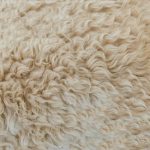When it comes to terry cloth fabric, preventing snagging is crucial to maintaining its quality and appearance. You'll want to start by selecting high-quality materials with a tight weave, ensuring durability from the get-go. After that, proper washing techniques can make a significant difference, so consider how you handle your laundry. But that's just the beginning—there are several strategies to protect your fabric from wear and tear. Understanding which practices make the biggest impact might surprise you, and you wouldn't want to miss out on those insights.
Table of Contents
Key Takeaways
- Choose high-quality terry cloth with a tight weave to reduce the risk of snagging.
- Wash terry cloth in cold water using a gentle cycle and mild detergent to preserve fibers.
- Avoid rough surfaces and sharp objects that may catch on the fabric while using or storing.
- Store terry cloth items in soft storage options to minimize friction and protect against snags.
Choose Quality Terry Cloth
When you're selecting terry cloth, always opt for high-quality materials to minimize the risk of snagging. Cheap terry cloth often uses inferior fibers that can easily fray or break, leading to unsightly snags. Look for fabrics labeled as 100% cotton or a high blend of cotton; these materials tend to be more durable and less prone to damage.
Check the texture and weave of the cloth as well. A tighter weave usually indicates better quality, as it's less likely to catch and pull apart. Inspect the fabric for any loose threads or irregularities before making a purchase; these flaws can spell trouble down the line.
Also, consider the weight of the terry cloth. Heavier options typically offer better durability compared to lightweight alternatives.
Don't forget to consider the intended use of the terry cloth. If you're buying it for items that will see heavy wear, like bath towels or kitchen cloths, investing in quality becomes even more crucial.
Proper Washing Techniques
Using proper washing techniques for your terry cloth can significantly reduce the chances of snagging and prolong its lifespan.
First, always wash your terry cloth items in cold water. Hot water can weaken the fibers, making them more susceptible to damage. When selecting a detergent, choose a mild, gentle option to avoid harsh chemicals that could harm the fabric.
It's best to wash terry cloth separately or with similar fabrics. This prevents any rougher materials from rubbing against it and causing snags. If you're using a washing machine, opt for a gentle cycle to minimize agitation. Avoid overloading the machine, as this can lead to excessive friction between items.
When it comes to drying, use a low heat setting or hang dry. High heat can cause shrinkage and increase the risk of snagging. If you prefer using a dryer, adding a couple of dryer balls can help keep the terry cloth fluffy and reduce static cling.
Avoid Rough Surfaces
To keep your terry cloth fabric snag-free, you need to be mindful of rough surfaces.
Look for potential hazard areas in your home where the fabric might catch or snag.
Also, consider using soft storage options to protect your fabric from any unwanted friction.
Identify Potential Hazard Areas
Identifying potential hazard areas, like rough surfaces, is crucial for keeping your terry cloth fabric snag-free. Start by examining your environment to spot any surfaces that could cause snags. Common culprits include rough furniture edges, sharp tools, and abrasive flooring. If you can, avoid placing your terry cloth items on these surfaces altogether.
When you're using your fabric, be mindful of what it's in contact with. For example, if you're sitting on a rough couch or leaning against a textured wall, you could inadvertently snag your fabric. Instead, opt for smoother alternatives if possible.
You should also pay attention to your clothing and accessories. Items like jewelry, belts, or even zippers can catch on your terry cloth and create snags. Therefore, it's wise to consider what you wear when using or handling your fabric.
Additionally, inspect your laundry area for any rough spots on machines or hangers that could lead to snags. By being proactive about identifying these hazard areas, you can significantly reduce the risk of damaging your beloved terry cloth.
Use Soft Storage Options
Choosing soft storage options can help protect your terry cloth fabric from snagging caused by rough surfaces. Instead of tossing your towels or garments into a basket with sharp edges, opt for storage bins made from soft materials like cotton or felt. These materials won't scratch or snag, keeping your terry cloth items safe.
When you're organizing your fabric, consider using fabric bags or pouches. They provide a gentle environment that allows your terry cloth to breathe while preventing any unintended pulls. If you need to stack your items, make sure to place them on a soft surface or use a cotton layer between each piece. This extra cushioning reduces friction and the risk of snagging.
Avoid hangers with metal clips or rough textures, as these can catch on the fabric. Instead, use padded or wooden hangers that offer a smoother surface.
When storing your terry cloth fabric, always prioritize soft options to maintain its quality. By making these small adjustments in your storage habits, you'll extend the lifespan of your terry cloth and keep it looking great for years to come.
Store With Care
Storing your terry cloth fabric properly can significantly reduce the risk of snagging. To start, avoid overcrowding your storage space. When you cram your fabric into tight areas, it increases the chances of friction and snagging against other items. Instead, give each piece enough room to breathe.
Use breathable storage bins or bags to protect your terry cloth. Plastic containers may trap moisture, leading to mold or mildew, which can weaken the fabric. Opt for cotton or canvas bags that allow air circulation.
If you're stacking your terry cloth, place heavier items on the bottom and lighter ones on top. This way, you minimize pressure on the fabric, preventing unwanted stretches and potential snags.
Keep your terry cloth away from sharp objects or rough surfaces. A simple scratch can lead to a snag that becomes more significant over time.
Lastly, consider the environment where you store your fabric. Avoid extreme temperatures and humidity, as they can weaken the fibers and make them more prone to damage. By taking these precautions, you'll help keep your terry cloth fabric in excellent condition, free from snags and ready for use whenever you need it.
Repair Snags Promptly
Addressing snags in terry cloth fabric as soon as you notice them can prevent further damage and keep your fabric looking its best. When you spot a snag, don't ignore it. Instead, take immediate action to repair it.
First, gently pull the snag back through the fabric using a needle or your fingers. Be careful not to tug too hard, as this can create a larger hole. If the snag's too stubborn to pull through, use a pair of sharp scissors to trim it. Cut only the snag itself, avoiding the surrounding fabric to maintain its integrity.
After trimming, you may want to reinforce the area with a bit of fabric glue or a small stitch to prevent future snagging. For larger or more complicated snags, consider seeking professional help. A skilled tailor can often repair the damage more effectively, restoring the fabric's original appearance.
Regularly check your terry cloth items for new snags, and make it a habit to repair them promptly. This proactive approach will extend the life of your fabric and keep it looking fresh and inviting.
Use Fabric Softener Wisely
Using fabric softener correctly can help maintain the softness of terry cloth while minimizing the risk of snagging. When you choose a liquid fabric softener, opt for one specifically designed for delicate fabrics. These formulas often contain fewer harsh chemicals, which can damage the fibers over time.
It's essential to use the right amount of softener. Too much can create a buildup, making the fabric stiff and more prone to snags. Follow the manufacturer's instructions for dosage, and consider using a measuring cup to ensure accuracy.
You should also avoid pouring the softener directly onto the fabric. Instead, dilute it in water first or add it to the fabric softener compartment of your washing machine. This helps distribute it evenly and reduces the chance of concentrated spots that could weaken the fibers.
Frequently Asked Questions
Can I Use Bleach on Terry Cloth Fabrics?
You shouldn't use bleach on terry cloth fabrics, as it can weaken the fibers and cause discoloration. Instead, opt for gentle detergents to keep your items looking fresh and maintain their softness.
Is It Safe to Iron Terry Cloth?
Yes, it's generally safe to iron terry cloth, but keep the heat low to avoid damage. Always use a pressing cloth between the iron and fabric, and check the care label for specific instructions.
How Can I Remove Stains From Terry Cloth?
To remove stains from terry cloth, you'll want to blot the area with a clean cloth, apply a gentle detergent, and rinse thoroughly. Avoid harsh chemicals to keep the fabric soft and intact.
What Is the Best Way to Dry Terry Cloth?
To dry terry cloth, you should use a low heat setting in your dryer or hang it up to air dry. Avoid high heat, as it can damage the fabric's texture and absorbency.
Does Terry Cloth Shrink After Washing?
Yes, terry cloth can shrink after washing, especially if you use hot water or high heat in the dryer. To minimize shrinkage, wash in cold water and tumble dry on low or air dry.
- How Does Ring Spun Cotton Affect Garment Fit and Shape Retention? - August 13, 2024
- What Are the Challenges in Producing Ring Spun Cotton? - August 13, 2024
- Is Ring Spun Cotton Suitable for Plus-Size Clothing? - August 13, 2024







